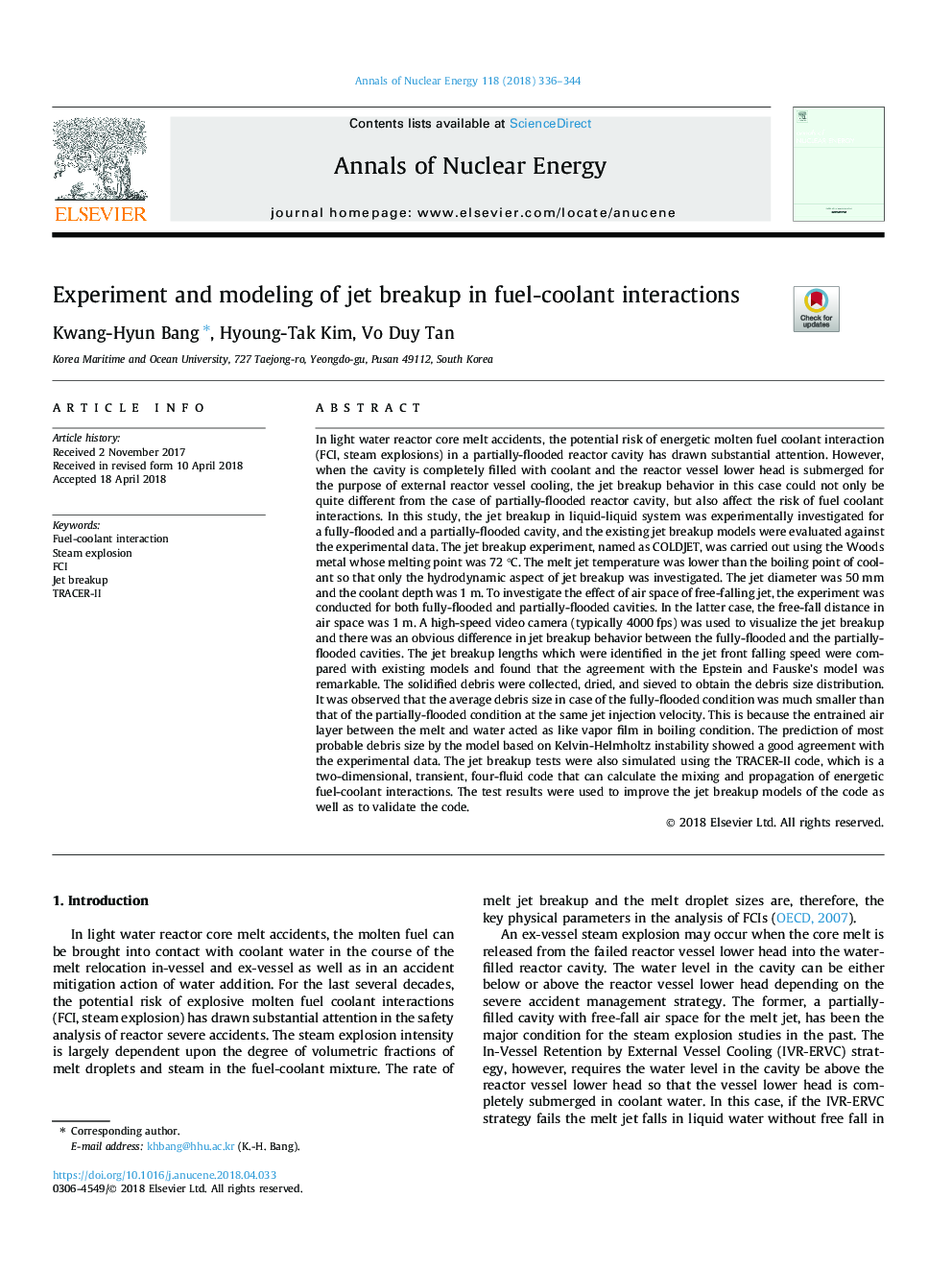| کد مقاله | کد نشریه | سال انتشار | مقاله انگلیسی | نسخه تمام متن |
|---|---|---|---|---|
| 8066991 | 1521078 | 2018 | 9 صفحه PDF | دانلود رایگان |
عنوان انگلیسی مقاله ISI
Experiment and modeling of jet breakup in fuel-coolant interactions
ترجمه فارسی عنوان
آزمایش و مدل سازی شکاف جت در تعاملات خنک کننده سوخت
دانلود مقاله + سفارش ترجمه
دانلود مقاله ISI انگلیسی
رایگان برای ایرانیان
کلمات کلیدی
موضوعات مرتبط
مهندسی و علوم پایه
مهندسی انرژی
مهندسی انرژی و فناوری های برق
چکیده انگلیسی
In light water reactor core melt accidents, the potential risk of energetic molten fuel coolant interaction (FCI, steam explosions) in a partially-flooded reactor cavity has drawn substantial attention. However, when the cavity is completely filled with coolant and the reactor vessel lower head is submerged for the purpose of external reactor vessel cooling, the jet breakup behavior in this case could not only be quite different from the case of partially-flooded reactor cavity, but also affect the risk of fuel coolant interactions. In this study, the jet breakup in liquid-liquid system was experimentally investigated for a fully-flooded and a partially-flooded cavity, and the existing jet breakup models were evaluated against the experimental data. The jet breakup experiment, named as COLDJET, was carried out using the Woods metal whose melting point was 72â¯Â°C. The melt jet temperature was lower than the boiling point of coolant so that only the hydrodynamic aspect of jet breakup was investigated. The jet diameter was 50â¯mm and the coolant depth was 1â¯m. To investigate the effect of air space of free-falling jet, the experiment was conducted for both fully-flooded and partially-flooded cavities. In the latter case, the free-fall distance in air space was 1â¯m. A high-speed video camera (typically 4000â¯fps) was used to visualize the jet breakup and there was an obvious difference in jet breakup behavior between the fully-flooded and the partially-flooded cavities. The jet breakup lengths which were identified in the jet front falling speed were compared with existing models and found that the agreement with the Epstein and Fauske's model was remarkable. The solidified debris were collected, dried, and sieved to obtain the debris size distribution. It was observed that the average debris size in case of the fully-flooded condition was much smaller than that of the partially-flooded condition at the same jet injection velocity. This is because the entrained air layer between the melt and water acted as like vapor film in boiling condition. The prediction of most probable debris size by the model based on Kelvin-Helmholtz instability showed a good agreement with the experimental data. The jet breakup tests were also simulated using the TRACER-II code, which is a two-dimensional, transient, four-fluid code that can calculate the mixing and propagation of energetic fuel-coolant interactions. The test results were used to improve the jet breakup models of the code as well as to validate the code.
ناشر
Database: Elsevier - ScienceDirect (ساینس دایرکت)
Journal: Annals of Nuclear Energy - Volume 118, August 2018, Pages 336-344
Journal: Annals of Nuclear Energy - Volume 118, August 2018, Pages 336-344
نویسندگان
Kwang-Hyun Bang, Hyoung-Tak Kim, Vo Duy Tan,
